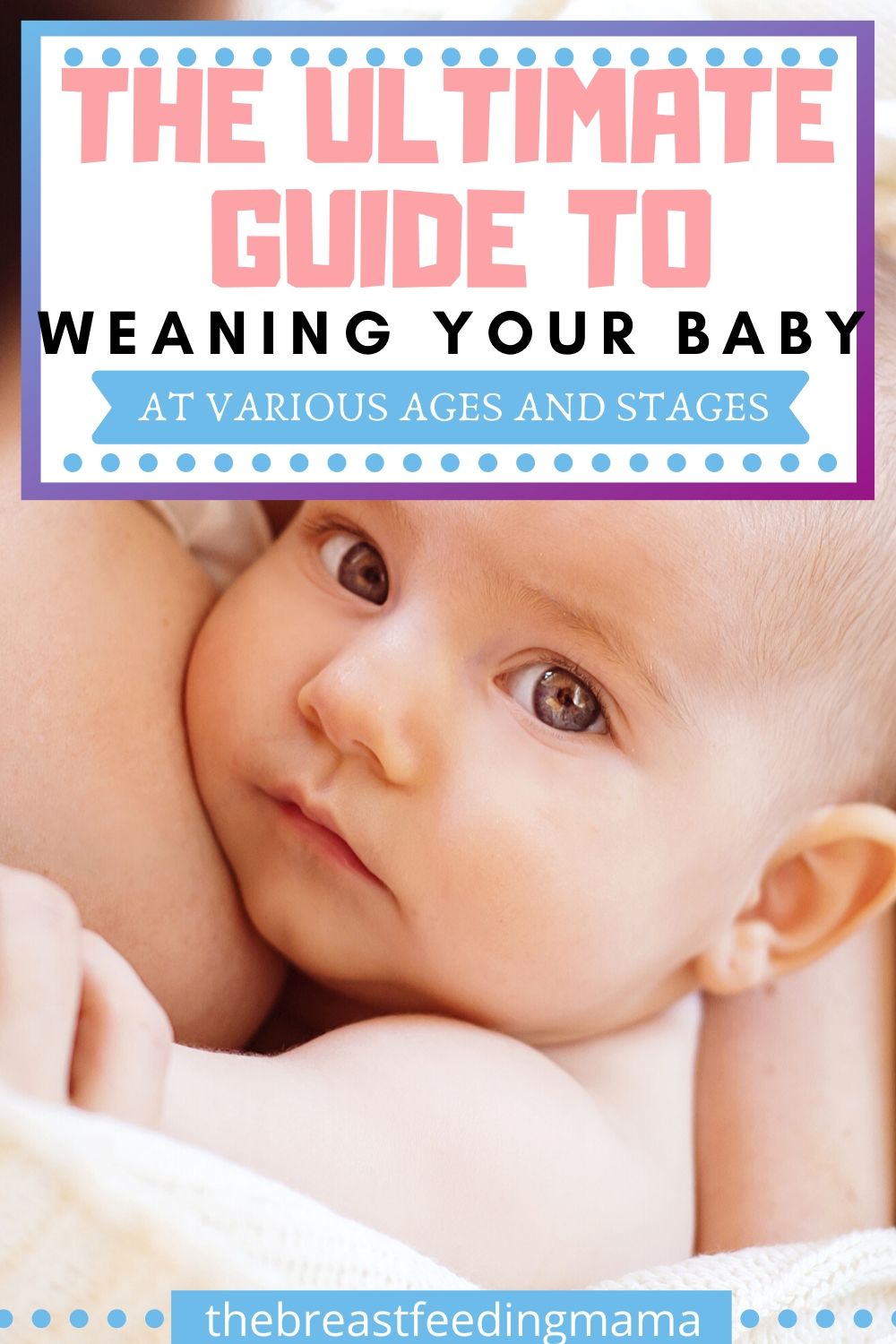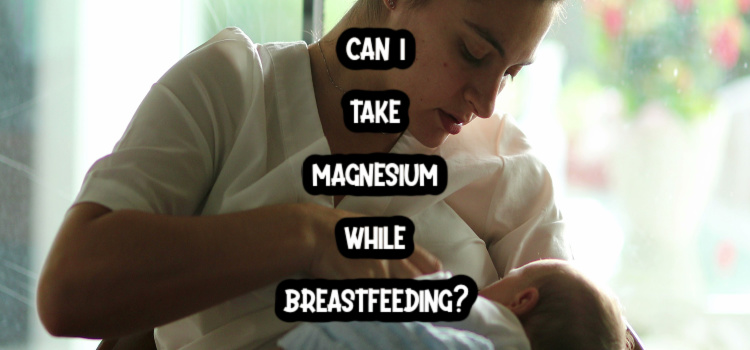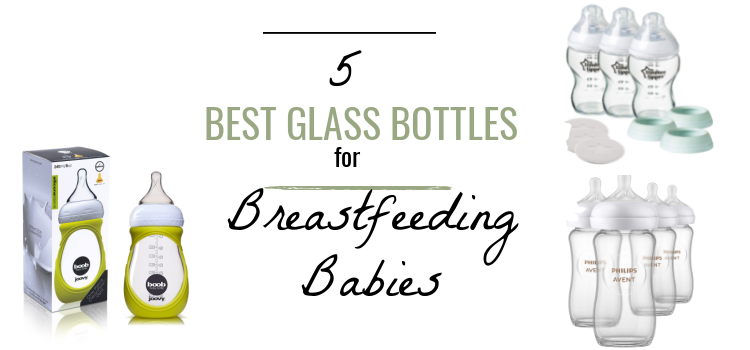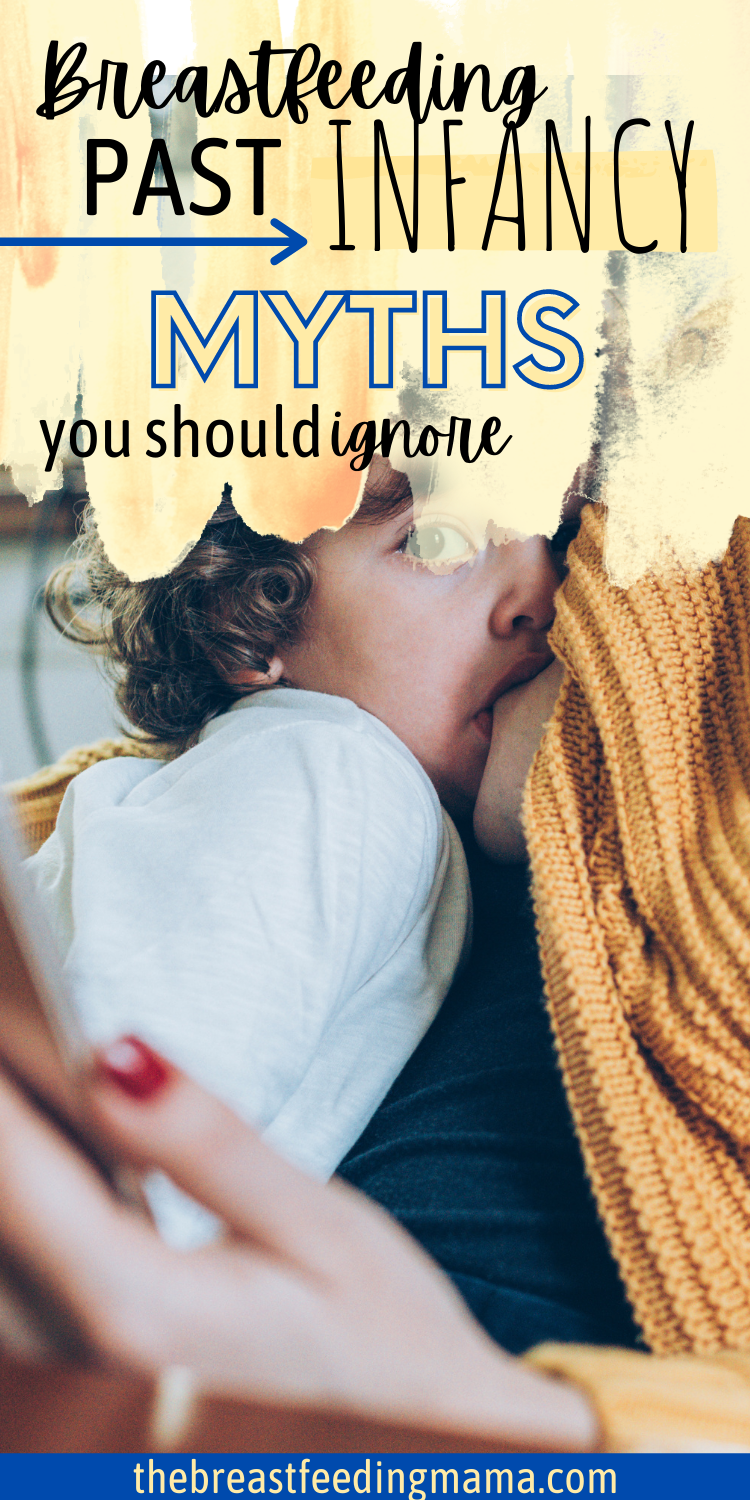How to Wean from Breastfeeding: Everything You Need to Know
This comprehensive breastfeeding weaning guide helps you wean your baby no matter what stage of life your baby is in from weaning from breastfeeding to bottle-feeding, weaning after one, or even trying to eliminate nighttime feedings from your baby’s schedule.

There comes a time in every breastfeeding baby’s life where they will wean from the breast.
For some, this may be at day one, and for others it may be years into toddlerhood.
There’s no one right answer for everyone, and there’s no one approach to weaning. In this post, we hope to share various tips and approaches so you can hopefully find the best approach for both you and your baby.
Choosing to Wean your baby
There are any different reasons why you choose to wean your baby.
Perhaps you are struggling to produce enough milk for your baby and you have tried everything to increase your milk supply, or maybe you are trying to eliminate nighttime feedings, or maybe your baby has reached the age of one (or two, or three), and you are transitioning from breastmilk to a cup or bottle.
Whatever the reason you choose to wean your baby, it’s important to know that you are doing what you feel is best for your baby – and the decision is up to you! As long as it works for your family, that’s what is important. The WHO recommends breastfeeding for at least two years – so don’t let anyone tell you that because your baby is one, you have to wean. But at the same time, if you’ve reached your stopping point – whether it be one, six, or twelve months – that is okay!
If you do want to breastfeed until one and then wean at that point, the weaning process should BEGIN when they turn the age of one – not end. Breast milk should be your baby’s primary source of nutrition for the entire first year.
How to wean from breastfeeding before one
If you choose to wean from breastfeeding before one this should be a decision you and your baby both make. Don’t feel like you have to wean your baby because others say that is what you should do and the same goes for continuing to breastfeed.
While breastfeeding and breast milk are wonderful, it can be difficult for many mothers – and it’s important to keep your mental health and your baby’s well-being in mind. For some mothers, weaning before one may be the best option.
I always like to tell other moms who wean from breastfeeding before one to celebrate the time that you have gotten to breastfeed your baby.
How to Transition to Full-time bottles
When you are transitioning to bottles with babies under one, you will want to be sure to follow this breastfeeding weaning guide to help you with the transition.
Pumped Breast Milk
For some mothers, weaning from breastfeeding to giving pumped milk in a bottle might the option of choice. This is a great choice, as you can still give your baby the benefits of breast milk.
If you choose to do this, keep in mind that it’s recommended to keep bottles to no more than 4 ounces – typically around 1-1.25 ounces per hour from the last time they ate. However, with exclusively pumped bottles, it may vary a little bit more – especially if your baby sleeps through the night.
Make sure to read this post all about pumping tips in case you haven’t pumped much before.
Selecting a Formula
However, many mothers choose to change to a formula, or to combo feed with formula and breast milk. Both options work just fine – it is important to remember that formula or breast milk should be the primary source of nutrition through the first year. Talk with your pediatrician about the best formula to use for your baby.
Formulas are tightly regulated, and most of them are pretty similar. If your child has an allergy or sensitive stomach, you may need to get a specialized formula for this. Organic formulas are also a great option.
Once you decide on a formula buy a small quantity of it, just in case, your baby is not a fan of the one you choose. It may take some time to get baby used to
Drop Feedings Slowly
During this breastfeeding weaning period, you will want to drop feedings gradually. Eliminate one feeding or pumping a day. With that feeding, you drop, replace it with a bottle.
Remember that you may need to pump or hand express as you drop these feeds. It can take some time to regulate your supply down, but it’s important to be careful so you don’t develop mastitis or clogged ducts.
If your baby does not take the bottle at first, try these tips to get your breastfed baby to take a bottle to help with the transition.
Continue to eliminate breastfeeding sessions with formula or pumped breast milk until you have transitioned completely to bottles.
Once your baby has weaned off breastfeeding you will want to make sure you dry up your breast milk safely and pain-free.
Continue to hold your baby during feedings
Although you may not be breastfeeding your baby, continue to hold and love on your baby while they are taking their bottle.
Your baby loves being close to you, and even if you are moving away from the comfort of your breast, they still want the comfort from your snuggles.
Use Distractions
When weaning your baby from breastfeeding it is natural for them to still be drawn to your breast to eat.
When this happens, use subtle distractions to take their mind off of breastfeeding and allow them to focus on the bottle of food you have.
It may be a good idea to have someone else offer a bottle for a time as well.
Weaning your baby after One
Ideally, you will breastfeed your baby until at least the age of one. The World Health Organization (WHO) recommends breastfeeding for at least two years, but one year is the minimum suggestion (when possible).
When making the transition from weaning your baby from breastmilk after one it is important to do this gradually and slowly for your own comfort so you don’t become engorged and also so your child doesn’t feel like they are being pushed away.
It can be a very emotional process for both mom and baby and by going slowly, it will have the best results for all involved.
With these simple weaning guide tips, it will make the transition much easier on you and your baby.
Don’t Ask, Don’t Refuse
This is the method I always use with my kids. It’s definitely the slowest moving one, but I feel it’s worked well for my family. I would only recommend this one if you are okay with nursing past the age of one.
It’s what it says – don’t offer to breastfeed but don’t refuse when they want to. Both my older boys stopped day nursing by about 18-20 months doing this. Night nursing was another story. But this worked well for daytime weaning.
Place time restrictions for when you nurse
You will find it easier to make this transition from breastfeeding to bottles if you place restrictions on when you breastfeed.
For example, set times when you will breastfeed your baby. Maybe you will only do night feedings, or perhaps you will only breastfeed after meals. Whatever the time restrictions you set, communicate this with your baby.
Although they may not understand at first, this will help them to learn what to expect. The older they are, the more they can understand simple words and phrases about what’s going on.
Shorten the time you breastfeed
The older your child is, the harder the process might be. At this point in your baby’s life, they have become accustomed to breastfeeding so it is a hard concept to get them to understand a new way of eating.
One way to help with the transition is to shorten the length of each breastfeeding session. This will help with the transition from breastfeeding.
After you notice your baby has stopped actively
Establish a transition method
Each time I’ve weaned a child from breastfeeding, I found it was much easier for them when I told them it was almost time to be done drinking their milk and to go and play.
You can do this too by telling them all done or even doing a count down till the end of their breastfeeding session before unlatching them.
Once you have unlatched them, you can offer them a bottle or cup and then distract them by playing toys with them.
Offer Milk
When your baby is one it is the perfect time to introduce milk to them! This means you can offer them milk whenever they are thirsty.
When going through the weaning process with my babies, I would always offer milk in a cup to them about 30 minutes before feedings. This allowed them to try it, taste it, and drink as much as they wanted before breastfeeding.
Throughout the day I would also encourage them to try milk when they were thirsty to get used to the flavor.
Offer Extra Cuddles
Once you start dropping feedings, you will notice your child still wants to be near you and you might even notice it is more than before. You want to be sure to offer more cuddles and bonding times in different ways.
Try sitting with them and reading a story or playing on the floor with them.
Be aware that your baby might be a little more clingy than before. Just note it is how they are coping with a huge transition in their life and they want to make sure you are not going anywhere during the transition.
Night weaning ideas after One
By the time your baby hits one we all hope our babies are sleeping through the night without breastfeeding, but for most moms, this is not the case!
I personally don’t recommend night weaning before the age of one if possible. I only recommend these methods below if your child is at least one year of age.
Dr. Jay Gordon’s Method
I love Dr. Jay Gordon’s method when it comes to night weaning. He suggests picking a 7-hour window that you choose as the most valuable sleep window that you want your baby to sleep through also!
If your baby wakes up during this window, Dr. Jay Gordon says to comfort your baby such as holding them or rubbing their back or singing to them. This is a non-cry it out method. If needed feed your baby, but try to not let them fall asleep while eating.
The first three nights will likely be hard. They usually are no matter what age your child is. My second son was about two when I finally decided to wean him (he stopped during the day much earlier but he loved night-time nursing!). After the first three nights, it got easier. But the first three were hard!
I highly recommend reading his entire post on this method to get an idea of what to do. But here is an example of what he recommends (feel free to adjust to your 7-hour window – this is based on 11 PM to 6 AM)
Anytime before 11: If your baby wakes up, nurse, cuddle, etc. your baby to sleep.
After 11 PM: Cuddle, hold, and even nurse your baby…but make sure they don’t fall asleep while nursing. Put your child down awake and rub their back, cuddle them, etc. until they fall back asleep. It’s important for the child to feel comforted and have you close by during this time.Your baby will probably not like it, but just make sure they know you are there.
Repeat this any time they wake up.
If your baby gets upset with the Dr. Jay Gordon method after three nights of attempting it go back to feeding your baby to get to sleep.
Your baby very well still need to nurse to sleep or throughout the night – and that’s okay. There’s nothing wrong with deciding to wait.
This article from The Milk Meg has some great advice on why older babies and toddlers still wake to breastfeed (and why it’s okay!).
After some time has passed, try the method again, when you feel like the time is right for you and your baby.
However, if you are seeing success, move on to the next phase! Because it’s pretty detailed, I would recommend going to that section in this article.
This method works. It takes time and patience, but it is a very gentle approach to night weaning after the age of one.
Other Night Time Weaning Tips
Maintain a consistent schedule
When you are consistent it becomes routine. Establishing a new bedtime routine that excludes nursing will be key to night weaning for your baby. Change your breastfeeding session to storytime in bed, or relaxing music time and snuggles.
Have your partner comfort baby at night
When your baby wakes up at night crying, allow your partner the opportunity to comfort your baby.
Have them go in, rub their back or reassure them they are ok! This will help with the temptation to feed them.
Offer a cup of water or milk when they want to breastfeed
Offering your child a cup of water or a bottle of milk before bedtime can help with night weaning. It can be a part of your new established bedtime routine to help your child know bedtime is nearing.
In the middle of the night, you can also offer this same option, prior to breastfeeding.
I hope you found this breastfeeding weaning guide helpful! Share your breastfeeding weaning tips in the comments!







How about some tips for those of us who lose our supply before we’re ready to wean?
Hi, Kate! I will work on a post on that – in the mean time, here are some articles I have written on my other website:
https://www.clarkscondensed.com/pregnancy-and-parenting/baby/breastfeeding/sudden-drop-in-milk-supply/
https://www.clarkscondensed.com/pregnancy-and-parenting/baby/breastfeeding/increase-milk-production/